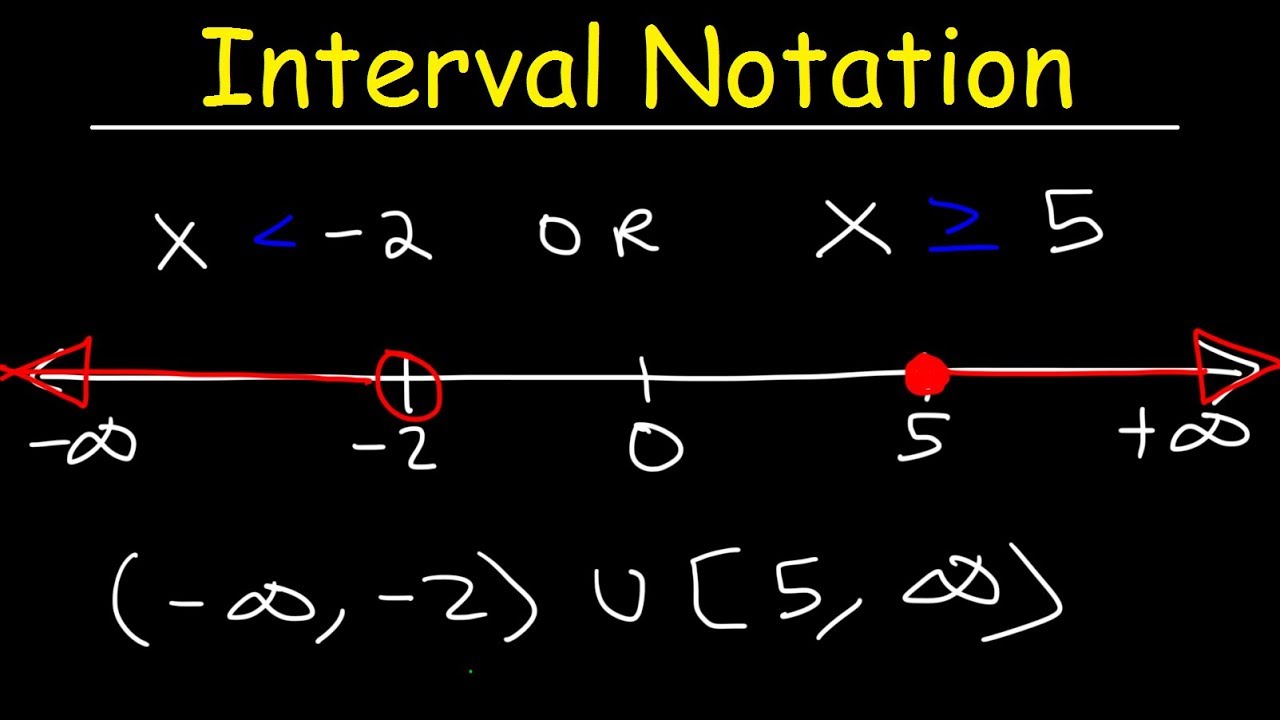Understanding Interval Notation A Comprehensive Guide
Interval notation is a powerful mathematical tool used to represent intervals on the number line. It provides a concise and precise way to express sets of numbers and is commonly used in various branches of mathematics, including calculus, algebra, and statistics. In this article, we will delve into the intricacies of interval notation, exploring its different components and the various types of intervals it can represent. By the end, you will have a solid understanding of interval notation and its significance in mathematics.
What is Interval Notation?
Interval notation is a shorthand method for expressing intervals as sets of numbers. It involves using parentheses, brackets, and symbols to denote the boundaries of an interval. The basic form of interval notation is [a, b], where a and b are real numbers representing the lower and upper bounds, respectively.
Open Intervals:
An open interval is represented by (a, b). Where a and b are real numbers. This notation indicates that the interval includes all numbers between a and b, excluding both endpoints. For example, the interval (0, 1) represents all real numbers greater than 0 and less than 1.
Closed Intervals:
A closed interval is represented by [a, b], where a and b are real numbers. This notation indicates that the interval includes all numbers between a and b, including both endpoints. For example, the interval [0, 1] represents all real numbers greater than or equal to 0 and less than or equal to 1.
Half-Open or Half-Closed Intervals:
A half-open or half-closed interval is represented by various combinations of parentheses and brackets. For example, [a, b) represents an interval that includes a but excludes b, while (a, b] represents an interval that includes b but excludes a. These notations are useful in specific mathematical contexts and allow for more precise descriptions of intervals.
Infinite Intervals:
Interval notation can also be used to represent infinite intervals. For example, (-∞, a) represents all real numbers less than a, and (b, ∞) represents all real numbers greater than b. These notations are particularly valuable in calculus and analysis.
Union and Intersection of Intervals:
Interval notation allows for the representation of unions and intersections of intervals. The union of two intervals, [a, b] ∪ [c, d], represents the set of numbers that belong to either interval. The intersection of two intervals, [a, b] ∩ [c, d], represents the set of numbers that belong to both intervals. These operations play a fundamental role in solving mathematical problems involving intervals.
Conclusion:
Interval notation is an essential tool for mathematicians, providing a concise and standardized way to represent intervals. Whether working with open intervals, closed intervals, half-open intervals, or infinite intervals, understanding interval notation allows for clear and precise communication in mathematical discourse. By mastering interval notation, you gain the ability to express intervals accurately, enabling you to solve a wide range of mathematical problems with ease.
